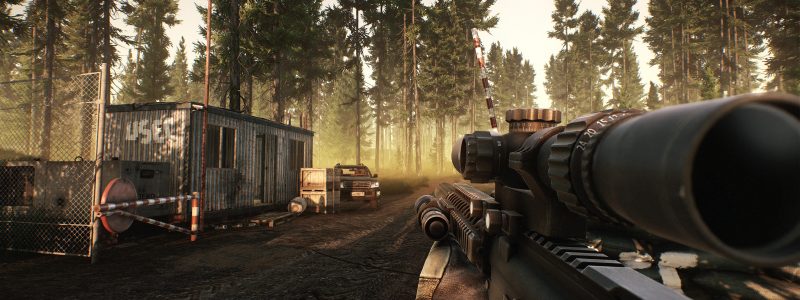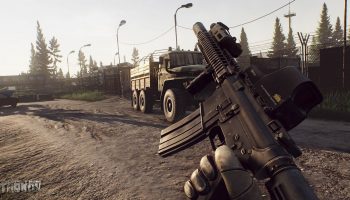Been lurking a while, but I've been playing the game since 12.10 or so, around the time the pandemic started.
Most of the recoil discourse here is fundamentally flawed or so surface-level as to be counterproductive and more sophisticated discussion is necessary. "Recoil compensation" (weapon convergence) in its current state is too heavy handed for meaningful recoil changes to take place, so there need to be bigger changes under the hood than just lowering recoil to avoid regressing to "lmao laser beam meta".
There are already many, many threads halfheartedly discussing Tarkov's recoil question in general. In overly broadly speaking, most of these threads are lobbying for a rollback to previous versions of the recoil balance, where meta guns had lower recoil across the board before the 12.11 patch added a stealth increase of vertical recoil by approximately 20 points. I think this would be a misstep as it does not address issues inherent to the current implementation.
Most of the recoil and weapon balancing issues that are highlighted currently on the subreddit were present in some form as far back as 12.9 and 12.10.
The general consensus seems to be that the the recoil is all backwards – mag dumping is meta because "recoil compensation" tops out after 1-2 seconds of continuous, sustained fire – weapons with fast rates of fire and large magazines are naturally favored in this environment. This maybe was less evident in previous iterations of the game, but was still present. Recoil changes in 12.11 that were implemented with inertia made this more plain to see, but it was always better to mag dump with an rifle than to burst fire it.
The performance gap between base and best-in-slot weapons is overly large. I can't speak to the earliest points in Tarkov's history but this has always been plainly evident to me post 12.10. The stock M4 has always kicked like a mule for some reason with the "meta" weapon being overly efficient in it's performance by comparison.
Across the spectrum of these observations, I've seen very little actual discussion outside of simply stating recoil seems bad in its current state with little other input outside of offering that an across the board reduction of it is necessary. This is often countered with the argument that we tried this already with the laser beam meta of 12.10.
The few threads that do touch on attachment balancing are sometimes overtaken by the loud crowd pointing out that some kind of overhaul of recoil needs to happen first.
For clarity's sake, I want to go over some weapon characteristics as I understand them here to illustrate the problems presented before going into my own suggestions.
Vertical recoil is some relative measure of how far the barrel of the weapon will travel upwards upon firing. This isn't too crazy and functions as expected.
Horizontal recoil is not how far left or right the barrel of the gun will travel when firing. It is a measure of how far backwards the weapon will travel when fired.
Dispersion is a hidden rng stat that governs the angle on screen that the barrel of the gun will travel in. I assume this interacts with the two recoil stats above to determine where the point of aim will end up when a shot is fired. The end result of this interaction is that the location of the barrel of will end up offset from the original point of aim vertically and horizontally, and pointed at a different angle.
These three stats, bundled together, are collectively what create and influence the recoil of the gun, determining where the point of aim will travel between shots.
Convergence is another stat often talked about in a roundabout fashion by the community in some form as "recoil compensation". This is the misunderstood part of the equation in my opinion. Convergence is unique stat for each gun that is essentially an impulse that is applied over time to the barrel of the gun when it is fired, in the opposite direction of the previous shot's recoil. Imagine the barrel of the gun having a rubber band wrapped over it that is pulled toward gun's original point of aim every time that it is fired. Like a rubber band, the further away it is, the harder it pulls, easing up as the distance decreases. After a set amount of time, that rubber band is removed. This is, in my understanding, a "good enough" illustration of what's happening under the hood.
None of this is new to most fps games. You fire a gun, the point of aim shifts, and the gun returns to the original point of aim at some rate. If this stat were set to 0, the point of aim would not reset to it's original position.
IMO, the aggressive implementation of convergence here is the issue behind Tarkov's backwards recoil feeling.
As you fire your weapon in full auto in Tarkov, more convergence impulses (rubber bands) are applied to the barrel and eventually reach a point where they are being applied and removed at essentially the same rate – this is why "recoil compensation" is "maxed out" after a couple seconds of sustained fire and why mag dumping is meta. The maximum number of rubber bands are on the barrel, all pulling in the direction of the original aim point, so of course the gun can't travel outside of the relatively smaller range of motion that it settles into as more convergence impulses are applied. If your gun's recoil stat is lower, this range of motion is smaller. As far as I can tell, the convergence stat is unaffected by attachments that affect recoil. This interaction is also why we don't have rounds flying as far off course later in a sustained course of fire than the first 3 rounds do. With burst fire and single shots, there aren't enough convergence impulses built up to confine your point of aim to the smaller boundary it would be stuck in if you were halfway through a sixty round casket mag.
Even techniques such as tap firing a few accurate shots before ramping up the rate of fire for a more controlled volume of fire are still beholden to the rubber band menace of convergence. This technique may file off a few corners of the square peg, but we're still essentially trying to put it in the round hole. It may work better, but on some level, it still just doesn't work as well as we'd like it to.
Now that we have established a "good enough" model for why the guns behave the way they do, we can actually propose meaningful change.
My proposal is to lower the convergence rate across the board, normalize it between similar caliber platforms, and reduce recoil and dispersion across the board.
To explain my thoughts and order these suggestions in increasing order of personal priority:
The lowest priority is to normalize convergence and dispersion in similar weapons platforms. There is no functional reason for, say, a base aks74u, aks74un, and aks74ub to have any real disparity in these stats because they are fundamentally the same weapon. The same can be said of the base AKM/S/N and base AK74/M/N. This is the least important part of this proposal and can be ignored for the most part but it is important to point out in my opinion.
Lowering recoil and dispersion is important in order for changes in convergence to feel good, but isn't strictly necessary. As it is, I would be okay trying a wipe with convergence on all guns being adjusted to 0 with no change to vertical recoil, horizontal recoil, and dispersion. With recoil kept as is, this would result in every single shot fired from a gun having the same amount of recoil as the first round. This would be jarring, but would serve to illustrate how over the top recoil is currently and fundamentally alter the state of gunplay.
Lowering the convergence rate of all guns across the board is the key, in my opinion. Think of this as weakening the strength of the rubber bands I mentioned. This would widen the spread of all guns across the board during full auto fire and require more active adjustment in aim to keep shots on target. It would most dramatically affect sustained, full auto fire. Combined with lower recoil, I think this would be the key to making tapfire and short bursts of fire more effective as well.
Even if there were no accompanying changes in recoil, this would make tap fire and short bursts more viable in comparison to wildly spraying in the general direction of the bad guys with the current firearm equivalent of a bucking stallion. The bonus to this is it also rewards active recoil management, though that is a point of contention with the developers. Another solution would be some kind of system of diminishing returns on convergence where later shots apply a smaller impulse resulting in diminishing recoil compensation returns for longer bursts, but that becomes complicated to model and to explain.
This doesn't really address how these changes would affect point fire, but I'm sure there's an easy solution in simply lowering convergence further when not actively aiming down sights. This would keep point firing viable at close ranges and avoid video-gamey situations of missing a shot on guys that you're sticking the barrel of your gun into, but it would help to limit it's utility at longer ranges.
I think this multi-pronged solution preserves the deadliness of careful and accurate shooting, rewards player skill, and would widen the pool of viable weaponry by making currently less popular guns like the AS-Val and SMGs more consistent in their recoil while maintaining the thing that makes shooting guns in Tarkov feel distinct without returning us to laser beam meta. At this point, balancing the attachments would also be easier to perform, possibly by changing the way attachment stats works by changing them from an additive to a multiplicative addition or reduction to recoil.
Anyways, that's it. That's the argument and my best explanation of current recoil with actual proposed recoil changes instead of "just roll us back onto patch 12.10 recoil but with the new content lmao". Let me know what you think and/or call me a dummy.







